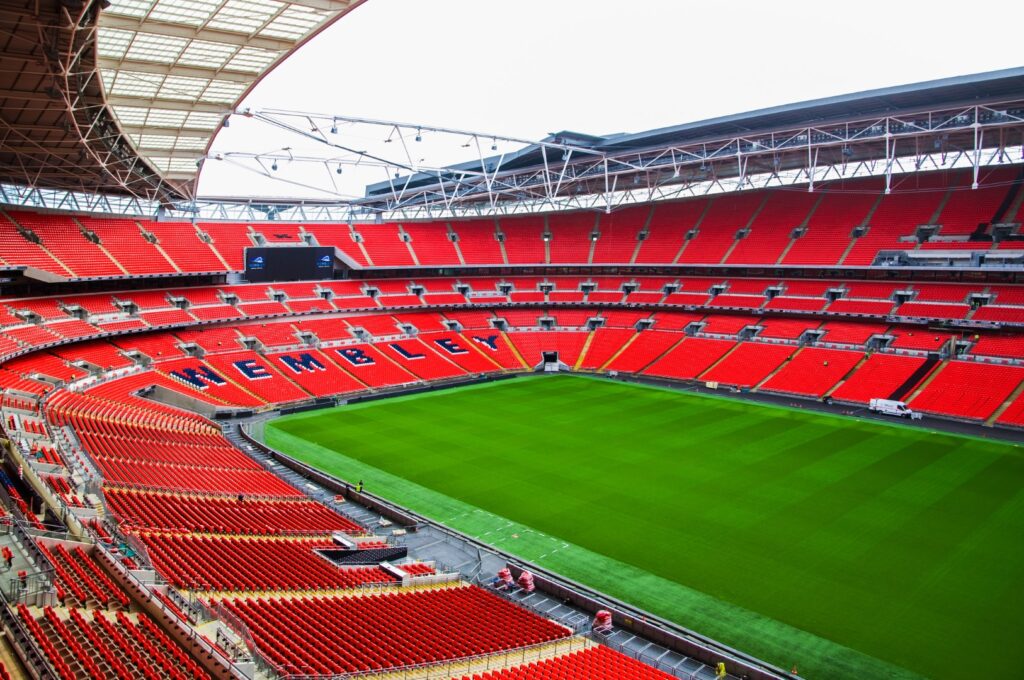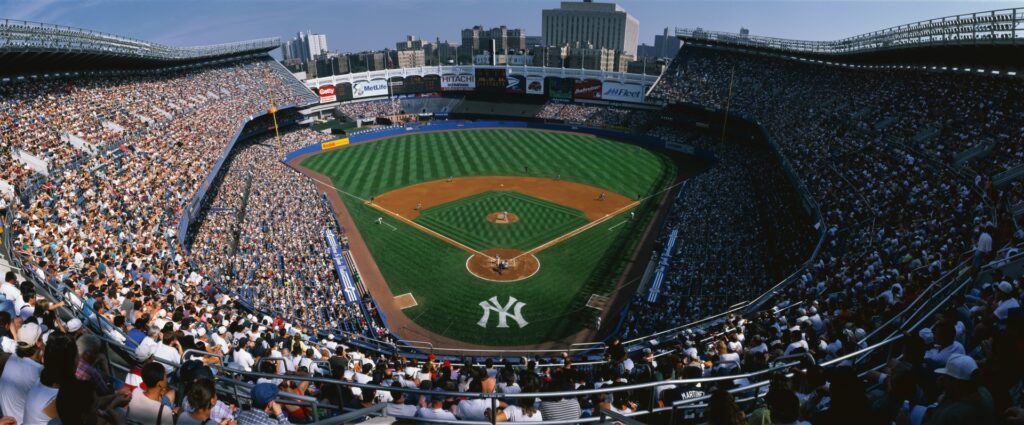Sports stadiums and arenas are more than just buildings – they are cultural landmarks, symbols of a city or country’s identity, and often hold a special place in the hearts of sports fans worldwide. From the historical and classic to the modern and state-of-the-art, here are some of the most iconic sports stadiums and arenas in the world.
Wembley Stadium – London, England
Wembley Stadium is the home of English football and one of the most recognizable sports stadiums in the world. The stadium has a seating capacity of 90,000 and is famous for its iconic arch, which stands at 440 feet tall. Wembley has hosted numerous memorable events, including the 1966 World Cup Final and the 2012 Summer Olympics.

Madison Square Garden – New York, USA
Madison Square Garden, also known as “The World’s Most Famous Arena,” is a multi-purpose indoor arena located in New York City. It has hosted some of the most iconic sporting events in history, including the “Fight of the Century” between Muhammad Ali and Joe Frazier in 1971 and the “Miracle on Ice” during the 1980 Winter Olympics when the USA men’s ice hockey team defeated the Soviet Union.
Camp Nou – Barcelona, Spain
Camp Nou is the home stadium of FC Barcelona and the largest stadium in Europe, with a seating capacity of 99,354. The stadium has been the site of countless memorable moments in football history, including some of Lionel Messi’s most iconic goals. It is also a symbol of Catalonia’s identity and has become a pilgrimage site for football fans from around the world.
Fenway Park – Boston, USA
Fenway Park is the oldest baseball stadium in America and home to the Boston Red Sox. The park is famous for its iconic green monster wall in left field, which stands at 37 feet tall. Fenway has hosted some of the most historic moments in baseball history, including Babe Ruth’s first home run and Ted Williams’ final game.
Maracana Stadium – Rio de Janeiro, Brazil
Maracana Stadium is one of the most iconic stadiums in the world and the largest in South America, with a seating capacity of 78,838. It has hosted two World Cup Finals, the 1950 and 2014 editions, and was the site of some of Brazil’s most famous football victories, including the 1970 World Cup Final.
Old Trafford – Manchester, England
Old Trafford is the home of Manchester United, one of the most successful football clubs in history. The stadium has a seating capacity of 74,140 and has hosted numerous memorable events, including the 1966 World Cup semi-final and the 2003 Champions League Final. It is also famous for its iconic “Theatre of Dreams” nickname.
Yankee Stadium – New York, USA
Yankee Stadium is the home of the New York Yankees and one of the most recognizable baseball stadiums in the world. It has hosted numerous historic moments, including Babe Ruth’s “called shot” in the 1932 World Series and the iconic “walk-off” home run by Aaron Boone in the 2003 American League Championship Series.

Stade de France – Paris, France
Stade de France is the largest stadium in France and the home of the French national football and rugby teams. It was built for the 1998 FIFA World Cup and has hosted numerous major events, including the 2007 Rugby World Cup Final and the 2016 UEFA Euro Final.
Melbourne Cricket Ground – Melbourne, Australia
The Melbourne Cricket Ground, or MCG, is Australia’s largest and most iconic stadium. It has a seating capacity of 100,024 and has hosted numerous memorable events including the 1956 Summer Olympics and the 1992 and 2015 Cricket World Cup Finals. It is also the home of the Australian Football League Grand Final, the most important game of the Australian Rules Football season.
Allianz Arena – Munich, Germany
The Allianz Arena is a modern football stadium located in Munich, Germany and home to the Bayern Munich football club. It is known for its unique exterior, which can change colors depending on which team is playing – red for Bayern Munich, blue for the German national team, and white for all other events.
Staples Center – Los Angeles, USA
The Staples Center is a multi-purpose arena located in Los Angeles, California and home to the NBA’s Los Angeles Lakers and Los Angeles Clippers, as well as the NHL’s Los Angeles Kings. It has hosted numerous memorable events, including the 2010 NBA Finals and the 2002 and 2012 NHL Stanley Cup Finals.
ANZ Stadium – Sydney, Australia
ANZ Stadium, formerly known as Stadium Australia, is a multi-purpose stadium located in Sydney, Australia. It was built for the 2000 Summer Olympics and has a seating capacity of 83,500. The stadium has hosted numerous memorable events, including the 2003 Rugby World Cup Final and the 2015 AFC Asian Cup Final.
The Bird’s Nest – Beijing, China
The Bird’s Nest, officially known as the National Stadium, is a modern sports stadium located in Beijing, China. It was built for the 2008 Summer Olympics and has a seating capacity of 91,000. The stadium has become a symbol of modern China and has hosted numerous events, including the 2015 World Championships in Athletics.

The Rose Bowl – Pasadena, USA
The Rose Bowl is an iconic football stadium located in Pasadena, California and home to the annual Rose Bowl Game. It has a seating capacity of 90,888 and has hosted numerous historic moments, including the 1994 FIFA World Cup Final and the 2002 and 2014 BCS National Championship Games.
The Colosseum – Rome, Italy
The Colosseum is a historic amphitheater located in Rome, Italy, and is one of the most famous and recognizable sports arenas in the world. It was built almost 2,000 years ago and was used for gladiatorial contests and other public spectacles. Today, it stands as a symbol of ancient Rome and attracts millions of visitors every year. In conclusion, sports stadiums and arenas play a crucial role in the world of sports. They not only serve as venues for games but also hold a special place in the hearts of fans worldwide. From the historical to the modern, these iconic sports arenas have become symbols of cultural identity and have hosted some of the most memorable moments in sports history.

